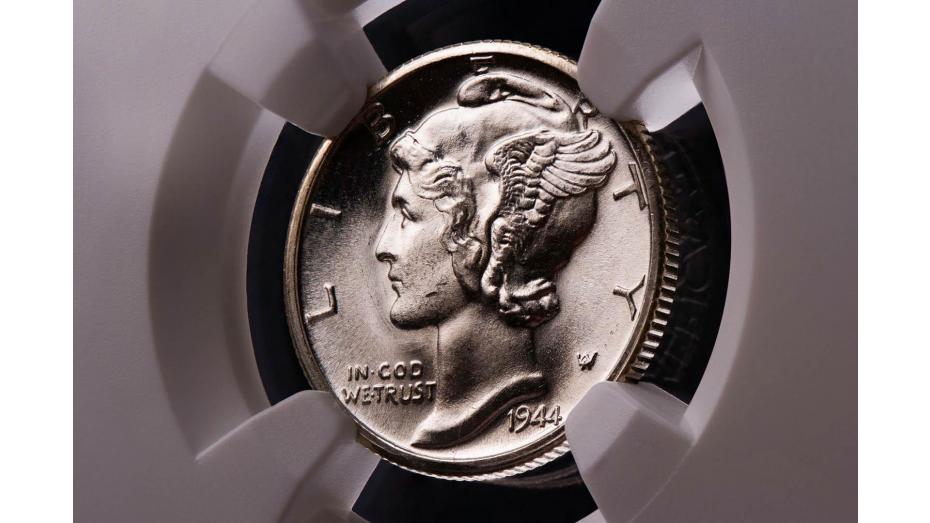The Mercury Dime: Celebrating an Iconic Coin on its 104th Birthday
On the 104th anniversary of the Mercury Dime’s October 30th, 1916 introduction, numismatists all around the country celebrate a treasure that forever changed the course of American coinage.
The period known as the American Coin Renaissance lasted from 1907 to 1921 and is widely regarded the most important time period in the history of United States numismatics. This remarkable era is remembered as a time of fabulous, new American coinage that featured unprecedented artistic excellence. Among these new and exciting coins was the Winged Liberty Head Dime, more commonly recognized by its nickname: The Mercury Dime.
Designed by Adolf A. Weinman, the Mercury Dime was the first new dime design since the Barber Dime’s introduction in 1892. Due to legislation that allowed the Mint to redesign coinage every 25 years, Assistant Treasury Secretary William P. Malburn permitted the Mint to submit designs for new silver coinage to be struck in 1916. In December of 1915, the Commission of Fine Arts rejected the new designs sketched by Mint Chief Engraver Charles Barber. Wanting new, distinct designs unlike any previously featured on American coinage, the Commission selected two of the most acclaimed sculptors in the United States, Adolph A. Weinman and Herman MacNeil, to submit design proposals for the new coins. Two of Weinman’s submissions were selected, including his new dime design.
Like all previous American dimes, the obverse proudly boasted the classic beauty of our beloved Lady Liberty. Though Weinman has never openly stated who he used as a model for Liberty, it is largely speculated that he based his rendition on a friend named Elsie Stevens, who had modeled for him in the past.
Whether it is Stevens or not, Weinman’s Lady Liberty dons a winged hat, which he later explained was symbolic of “liberty of thought.” However, Liberty was commonly mistaken for the Roman god Mercury, which seemed somewhat fitting given that he was the god of commerce. The resemblance between Liberty and Mercury was so apparent and widely-acknowledged that the coin was eventually nicknamed the “Mercury Dime.”
Arguably as stunning as its obverse, the coin’s reverse is intricately detailed and rife with symbolism. This design displays a Roman fasces, which is an axe surrounded by a bundle of wooden rods that represents the military strength of the United States and its willingness to fight if necessary. To contrast the fasces, an olive branch wraps around its entirety as a reminder of America’s desire to stay out of conflict and pursue peace whenever possible.
The Mercury Dime was struck in abundance right off the bat, with over 22,000,000 being minted out of Philadelphia in 1916. The Denver Mint, however, produced only 264,000 examples that year. With such a minuscule mintage, this specific issue of the coin is considered the rarest and most valuable of the entire series. Steady production of the dime continued for the next six years, but in 1922 economic hardships caused the Mint to produce no dimes for the first time since 1826. This short hiatus lasted just one year, though, as the Mercury Dime was put back into circulation the very next year in 1923.
The Mercury Dime remained in production until 1945, and it is now remembered as a true work of art that heralded a new standard of artistry for United States coinage. Today, only a fraction of these coins exist in mint state and the coin is accordingly one of the most coveted by collectors. Even 104 years after its introduction, the Mercury Dime is lauded as one of the most monumental pieces of American numismatic history to ever be produced.






